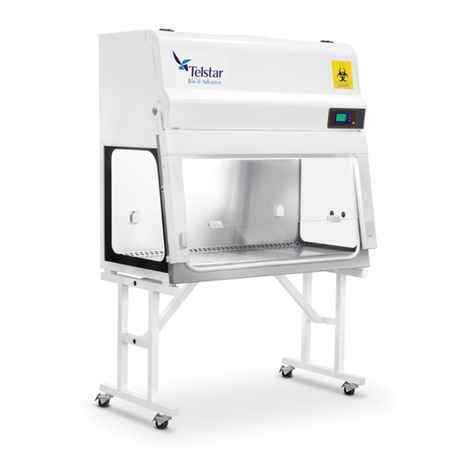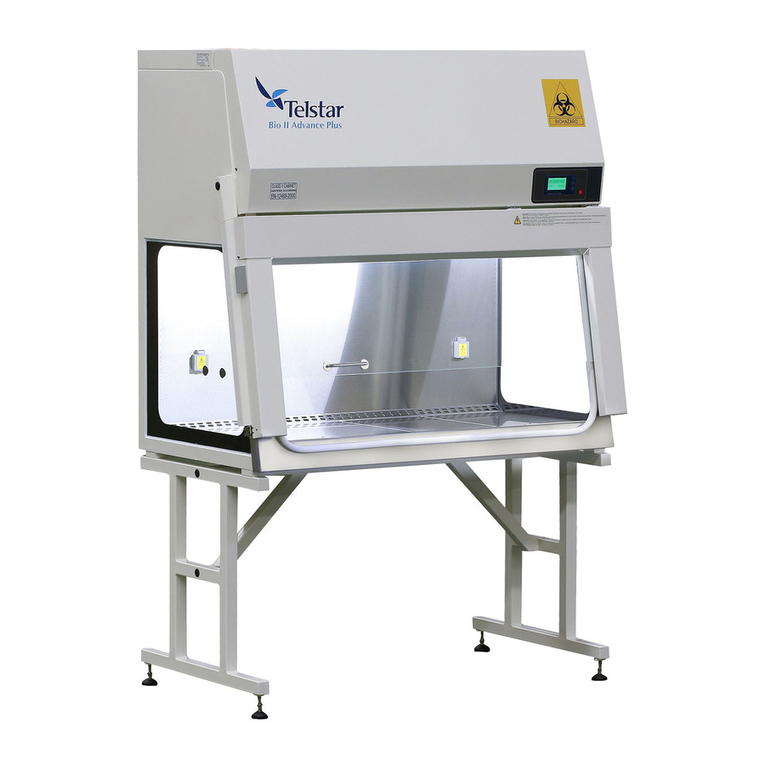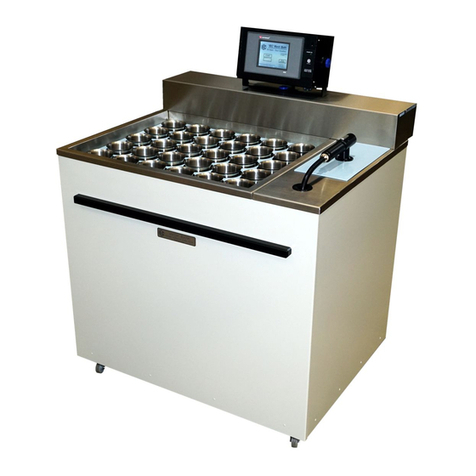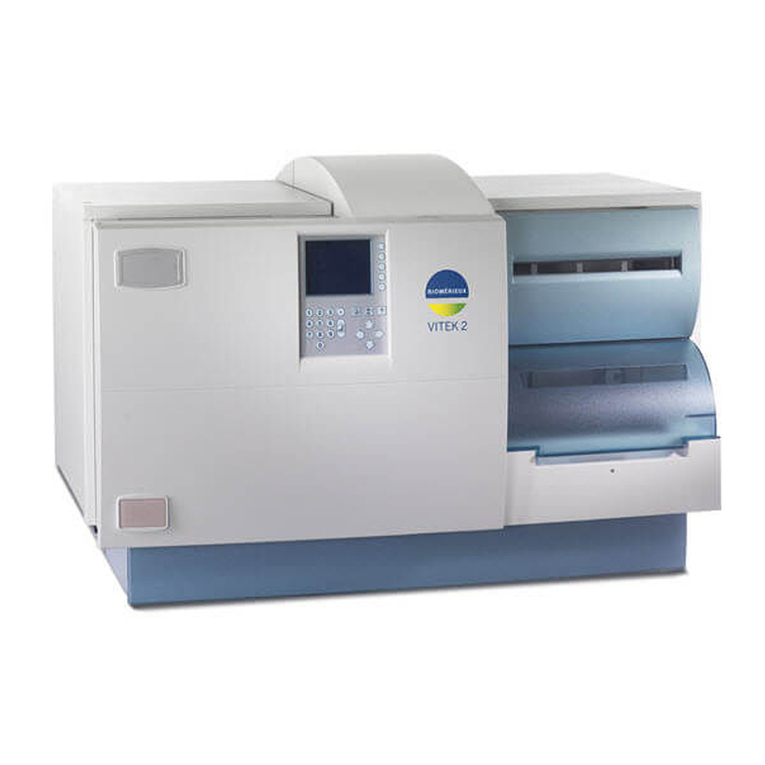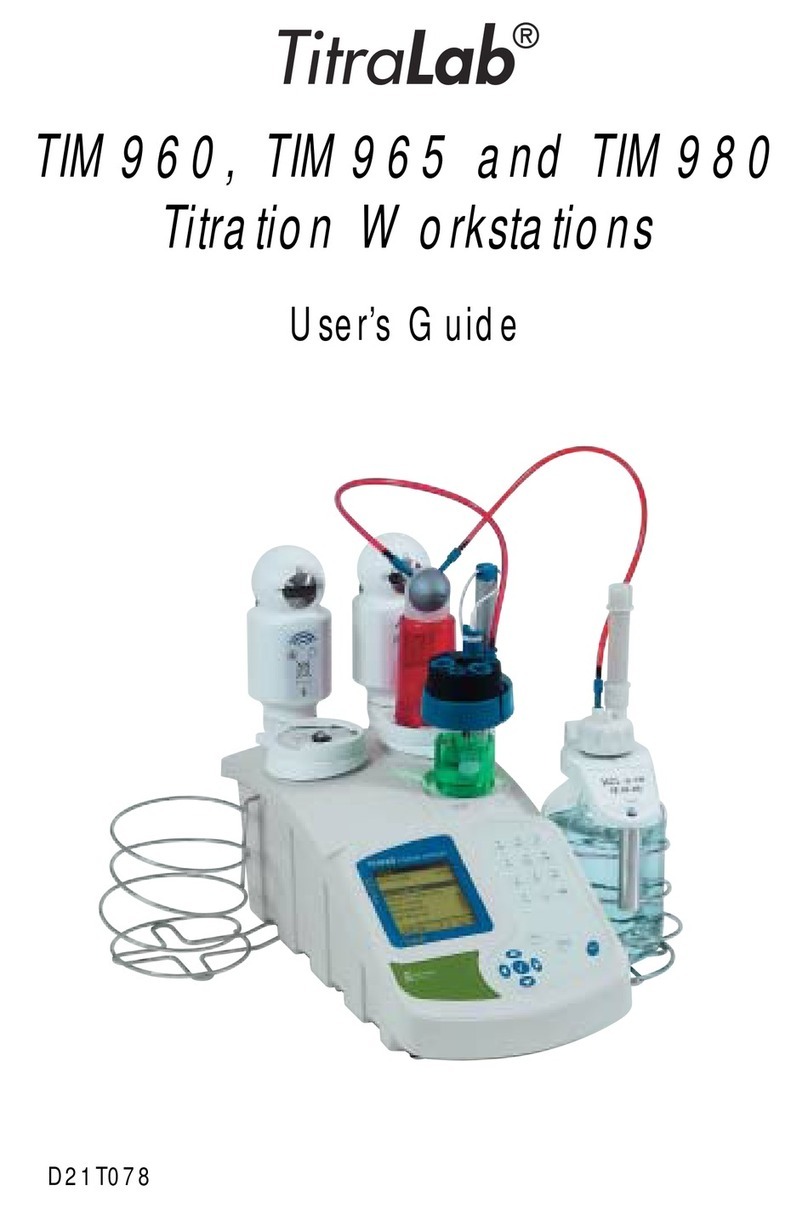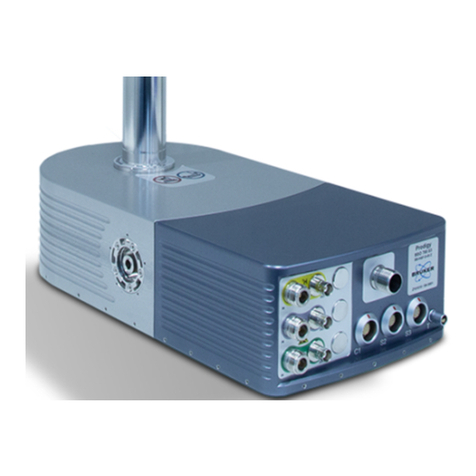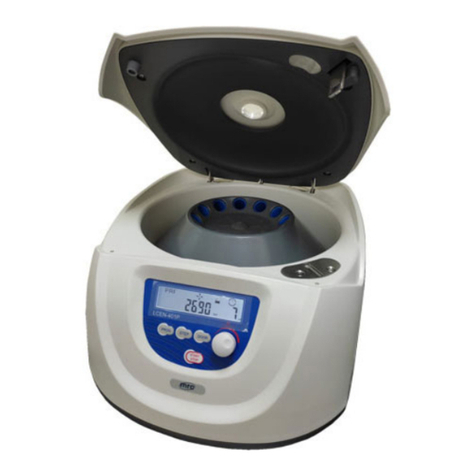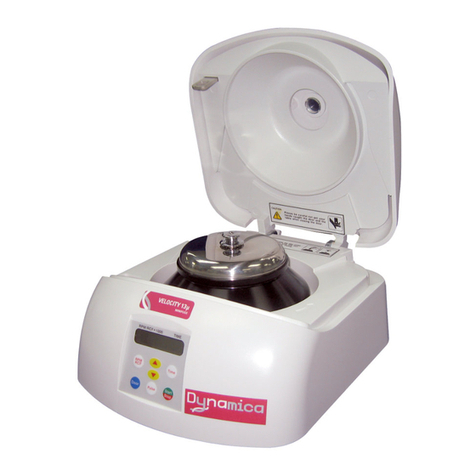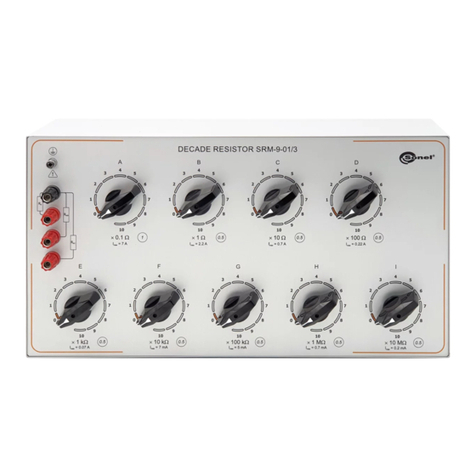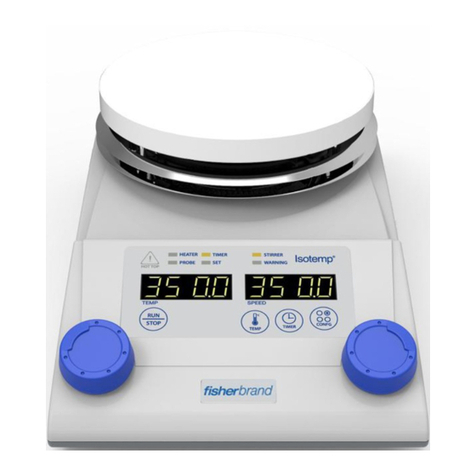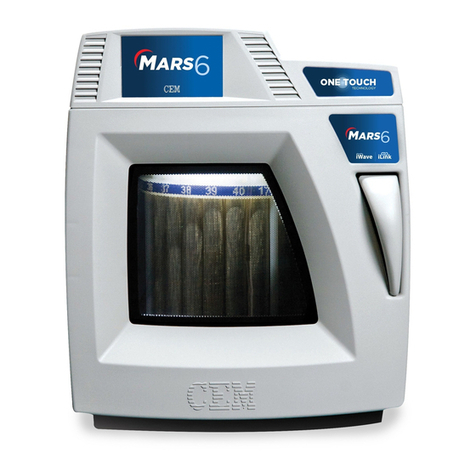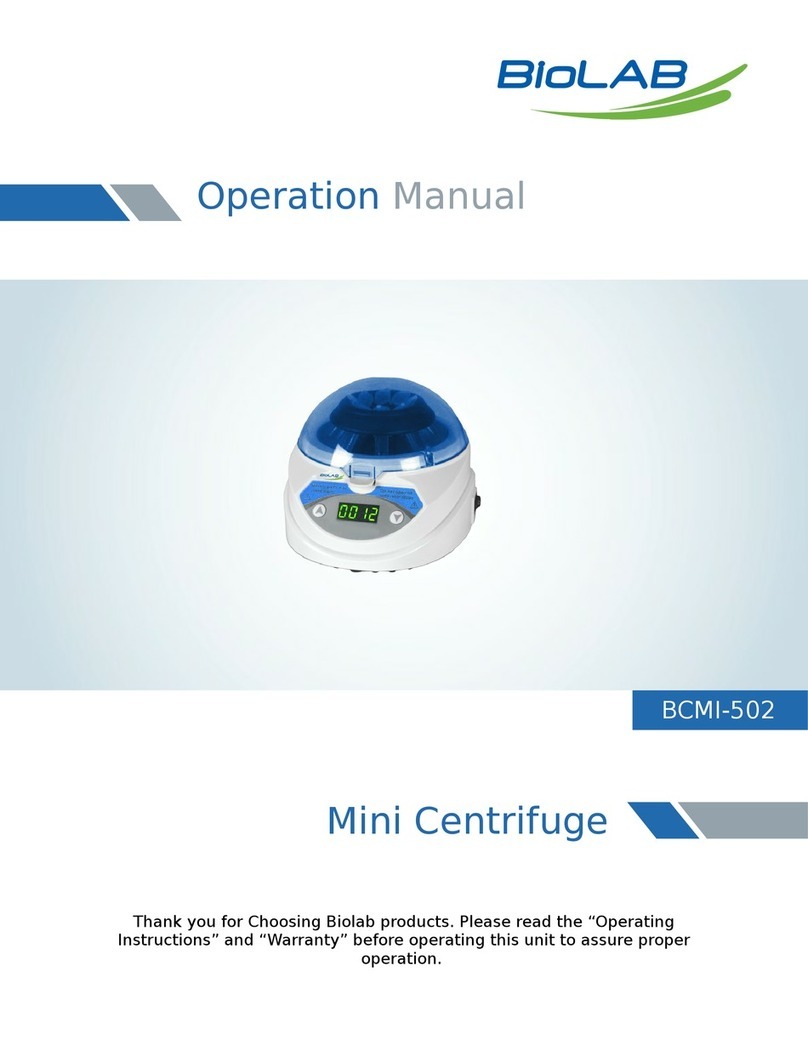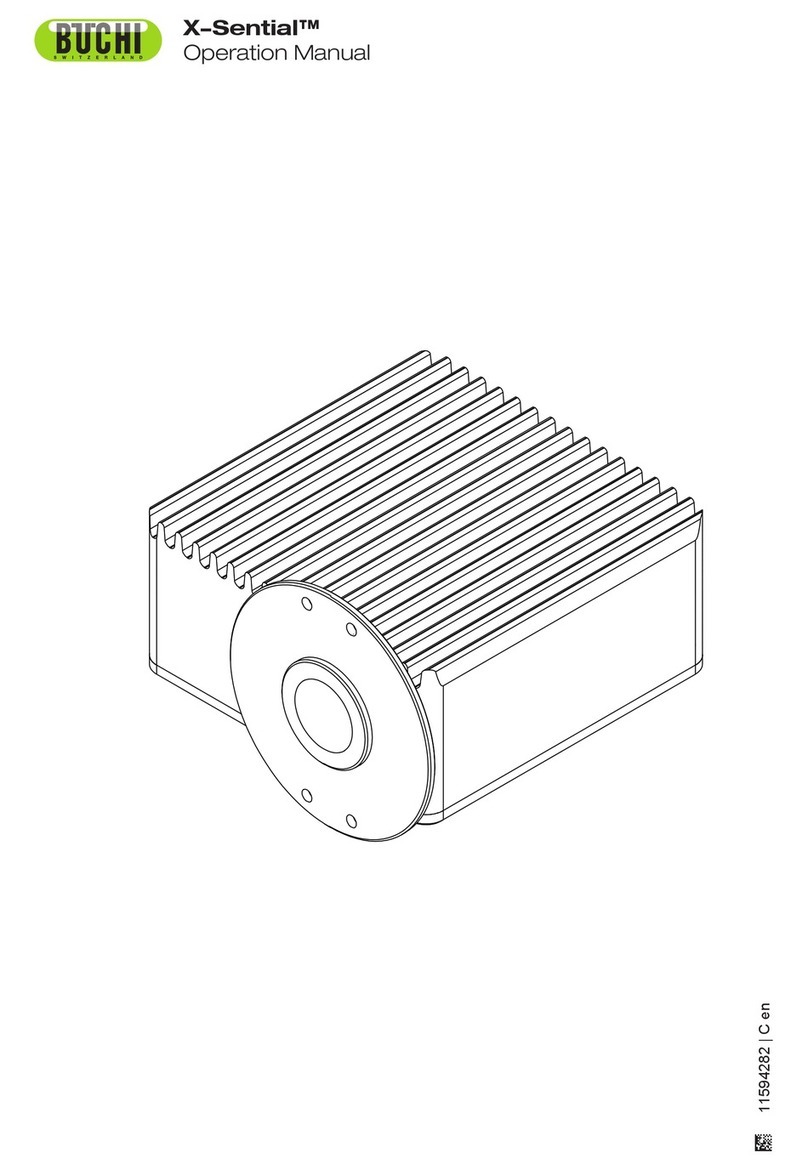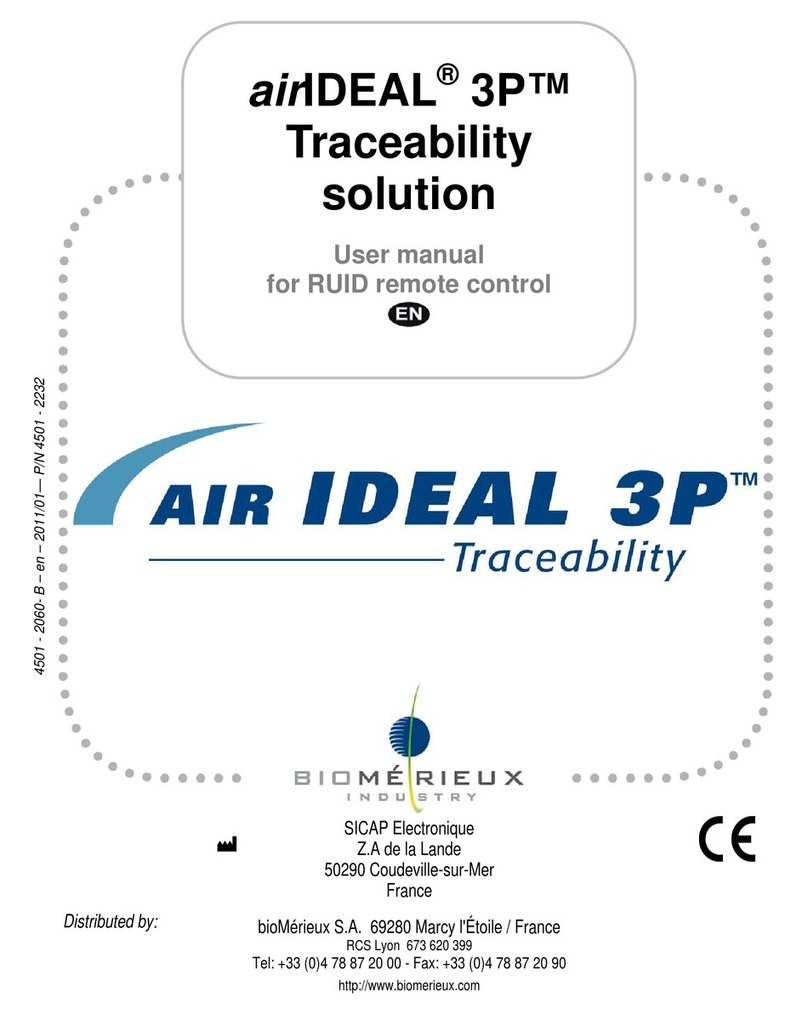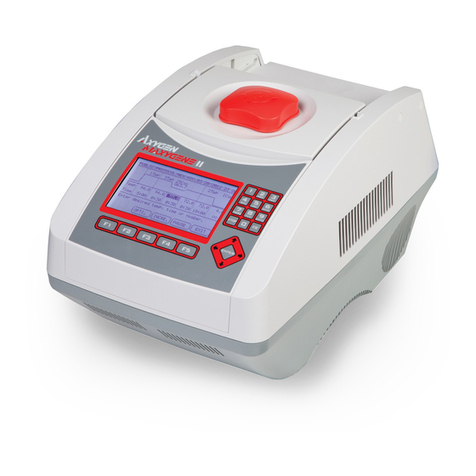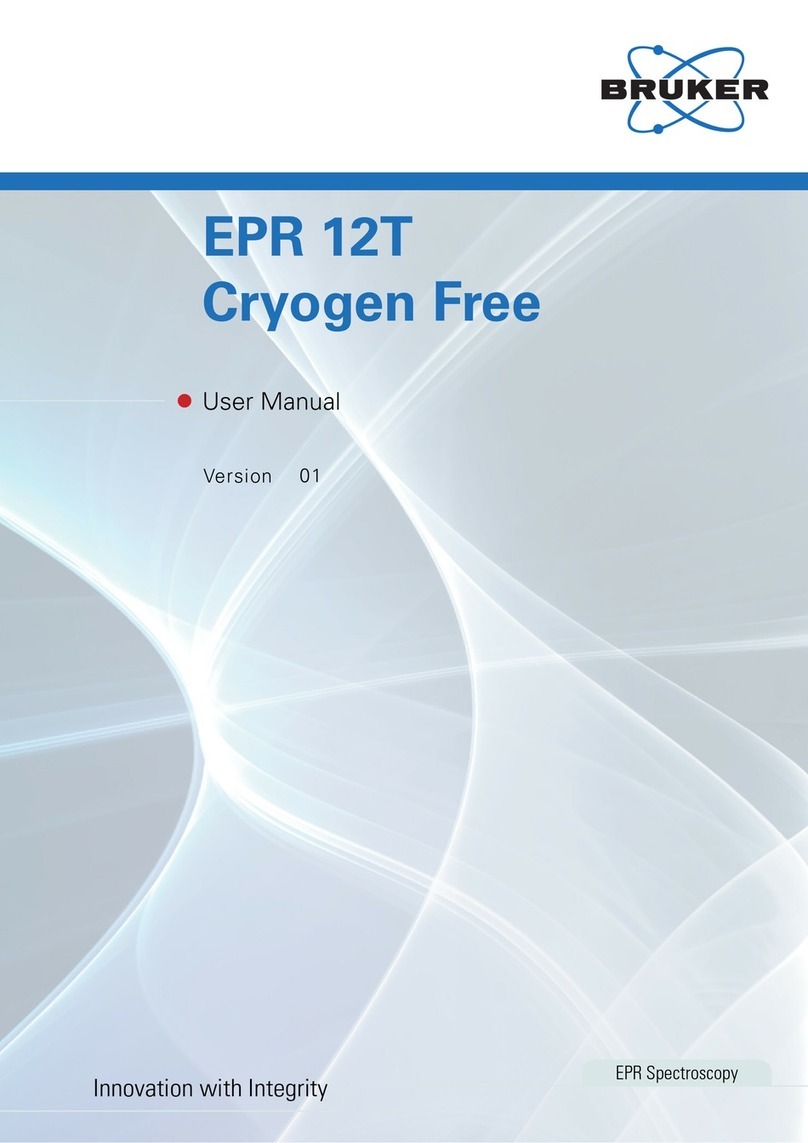Telstar CRYODOS User manual

Laboratory Freeze Dryer
CRYODOS
MAINTENANCE MANUAL
T
elstar Industrial, S.L.
Josep Tapiolas, 120
08226 TERRASSA (Spain)
Tel. +34 937 36 16 00
Fax: +34 937 85 93 42
www.etelstar.com
CRYODOS_I_rev0105MA

Page 2 of 20
CONTENTS
1. INTRODUCTION __________________________________________________ 3
2. MAINTENANCE INSTRUCTIONS ______________________________________ 4
2.1. Vacuum unit maintenance ______________________________________ 4
2.1.1. Inspection of oil condition_______________________________________ 4
2.1.2. Oil level control_______________________________________________ 4
2.1.3. Oil change___________________________________________________ 4
2.1.4. Control visual de pérdidas de aceite_______________________________ 5
2.1.5. Gas ballast situation ___________________________________________ 5
2.2. Refrigerating system maintenance ________________________________ 5
2.3. Technical assistance program____________________________________ 5
2.4. Maintenance chart_____________________________________________ 8
3. TROUBLESHOOTING _______________________________________________ 10
3.1. Vacuum unit _________________________________________________ 10
3.2. Refrigerating unit _____________________________________________ 11
3.3. Freeze-dryer assembly _________________________________________ 11
4. UNIT SPARE PART CODES __________________________________________ 12
4.1. Vacuum group________________________________________________ 12
4.2. Refrigerating system___________________________________________ 12
4.3. General _____________________________________________________ 12
5. MAINTENANCE RECORDS ___________________________________________ 13
5.1. Time counters ________________________________________________ 13
5.2. Other operations______________________________________________ 14
6. ATTACHED DOCUMENTATION________________________________________ 15
6.1. CRYODOS –50 Refrigerating system P&ID __________________________ 15
6.2. CRYODOS –80 Refrigerating system P&ID __________________________ 16
6.3. Legend of cryodos electric diagrams ______________________________ 18
6.4. Electric diagrams _____________________________________________ 19

Page 3 of 20
1. INTRODUCTION
The aim of a maintenance plan is to provide a guide for operating on all installed components that
require maintenance.
The success of a maintenance plan basically depends on how detailed the information is and on the
correct analysis of this information. The maintenance plan must therefore be an active document to be
modified according to user requirements.
The maintenance plan sets out a series of inspections and operations that range from being carried out
on a daily basis to up to once every six months. The corresponding information should be compiled and
noted in detail in order to be of use for the following maintenance operations.

Page 4 of 20
2. MAINTENANCE INSTRUCTIONS
WARNING
•Before beginning any maintenance operation or work on the freeze-dryer, disconnect it from the
power supply.
•In general, a regular inspection of the correct operation of all the unit components should be
performed once a year.
2.1. VACUUM UNIT MAINTENANCE
The revision and maintenance operations to be done in the vacuum unit are as follows:
2.1.1. INSPECTION OF OIL CONDITION
The visual inspection is performed through the sight glass (7). The pump must be switched off but at
working temperature.
The usual state of the oil is normally clear and transparent. Oil draining and changing is recommended
when it looks dirty or milky (water contaminated).
2.1.2. OIL LEVEL CONTROL
The correct level for oil is shown when it is seen half way up the sight glass (7). If it falls below this
point, top up with the necessary amount through the filler hole when the pump is not running.
2.1.3. OIL CHANGE
This operation has to be done with pump switched off but at working temperature (the pump must
have been running for at least 20 minutes to ensure proper viscosity of the oil).
To change vacuum pump oil proceed as follows:
1. Unscrew the emptying cap (8) and leave the dirty oil flow out. When there is any oil remaining,
start up the vacuum pump for some seconds and stop it. Screw the emptying cap (8). REMARK:
comply with current environmental standards and regulations when disposing of the used oils.
2. Take out the filling cap (6).
1.- Admission.
2.- Gas-Ballast.
3.- Gas-Ballast key.
4.- Oil filter (exhaust).
5.- Suck-back pipe.
6.- Filling cap.
7.- Sight glass.
8.- Emptying cap.
7
8
5
6
4
1
3
2

Page 5 of 20
3. Pour new oil into the filling hole into the filling hole until the level is half way up the sight glass (7).
4. Screw the filling cap (6).
It is advisable to carrying out a periodic interior cleaning of oil and of pump body. To do this, first pour
¼ in the normal amount of oil for normal pump working, run the pump for 30 seconds to empty it out.
Next repeat this operation with the same amount of oil and the same time, empty it out again and
then pour in the final filling to half way up the level sight glass.
As the pump may be damaged by being idle for long periods with dirty oil in it, it is advisable to
change the oil before the beginning of the idle period.
The recommended TELSTAR Oils are:
- AV-30, mineral oil for general industry and laboratory applications.
- CHEMOIL-500, specially designed for use at high temperatures.
- WETOIL-8r, specially designed for moisture absorbing applications.
Vacuum pump oil capacity: 0,5 litres.
2.1.4. CONTROL VISUAL DE PÉRDIDAS DE ACEITE
Make sure that there is no oil remaining around the vacuum pump. Presence of oil drops means oil loss
through the seals, caps or level. Proceed to clean the area and locate the origin of the loss.
2.1.5. GAS BALLAST SITUATION
The gas-ballast (2) is placed in the suck-back pipe (5) communicating this pipe with the gas exhaust
filter of the vacuum pump (includes a gas ballast key (3), that allows its regulation).
2.2. REFRIGERATING SYSTEM MAINTENANCE
The refrigerating system needs practically no maintenance. If, by accident or due to any refrigerating
circuit damage, oil or cooling liquid has to be added, consult our technical service.
To ensure proper cooling of the refrigerating system, all the grids must beat a suitable distance from
the equipment and the wall (minimum distance of 20 cm.).
Periodic cleaning away of dust accumulated in the cooling unit condensing battery at the back of the
base unit is recommended. To clean this, the cover must be opened and a small paintbrush used to
remove the dust. This should be done particularly before summer.
When the switch is off, the compressor continues working for the time set by the collecting timer (2
min.) in order to suck up the gas from the evaporator. If the compressor fails to stop after this period,
the equipment must be inspected, as it is not good for the compressor to continue working without
circulating gas.
Refrigerating loads:
R-404a R-23
CRYODOS-50 800 gr. -----
CRYODOS-80 800 gr. 8 kg/cm2
2.3. TECHNICAL ASSISTANCE PROGRAM
This is a menu incorporated in the equipment, which provides for come of the maintenance work.
WARNING
This program is only for maintenance and technical assistance tasks; it should never be used for
normal equipment operations.

Page 6 of 20
The Technical Assistance program provides for:
•Working on the vacuum unit independently.
•Working on the cooling unit independently.
•Setting to 0 /Resetting the timetable counters.
-Vacuum Pump
-Compressor E1
-Compressor E2 (only CRYODOS –80)
To access the Technical Assistance Program, proceed as follows:
Switch on the equipment; the initial screen will appear, then hold the ENTER key during 10 seconds till
access to the Technical Assistance Program. To exit and go back to the normal operation program,
press the ON/OFF key.
Diagram
INITIAL SCREEN TECHNICAL
ASSISTANCE
PROGRAM
ENTER NORMAL
OPERATION
ON/OFF
SCREENS
The Technical Assistance Program has several screens forming options viewed by use of the UP/DOWN
keys.
Cooling unit operation
This option provides for working independently on the cooling unit. The screen shows condenser
temperature and whether the process is on “ON” or “OFF”.
COOLING OFF
TEMP: -033.2 ºC
ON/OFF
COOLING ON
TEMP: -033.2 ºC
Vacuum unit operation
This option provides for working independently on the vacuum unit. The screen shows the vacuum
level and whether the process is running, “ON” or not, “OFF”.
PUMP OFF
VACUUM: 1.0 10+3 mB
ON/OFF
PUMP ON
VACUUM: 1.0 10+3 mB
Resetting time counters
The time counters can be reset by pressing the ENTER key, giving access to the confirmation screen,
and then pressing ENTER again. To leave the confirmation screen, press the UP/DOWN key.
If any other key is pressed, it will not reset.

Page 7 of 20
Compressor E1
This shows hours running of compressor 1 and provides for resetting them.
HOUR COUNTER
COMP E1 00080 H
ENTER
RESET ? [< - ]
COMP E1 00080 H
Compressor E2 (only for CRYODOS-80)
This shows hours running of compressor 2 and provides for resetting them.
HOUR COUNTER
COMP E2 00070 H
ENTER
RESET ? [< - ]
COMP E2 00070 H
Vacuum pump
This shows pump running hours and provides for resetting them.
HOUR COUNTER
PUMP 00060 H
ENTER
RESET ? [< - ]
PUMP 00060 H

Page 8 of 20
Working diagram
2.4. MAINTENANCE CHART
The following frequencies for each task, and particularly that for oil changes, as shown on the
Maintenance Chart below, are for guidance with normal freeze dryer work. Very severe work conditions
may indicate a reduction of these intervals on the Chart.
VAC: 0.010 mBar
TEMP: -045.0ºC
ON/OFF
ON/OFF
ON/OFF
ENTER
ENTER
ENTER
COOL + VACUUM ON
TIME: 11:23:45
CRYODOS V3.1 -50
TELSTAR (c)
SYSTEM READY
HOUR COUNTER
PUMP 00150 H
HOUR COUNTER
COMP E1 00160 H
HOUR COUNTER
COMP E2 00099 H
ALARMS
ALARM [<-]
VACUUM SYSTEM
ALARM [<-]
VACUUM PROBE
ALARM [<-]
TEMP PROBE
TECHNICAL ASISTANCE
PROGRAM
COOL OFF COOL ON
TEMP: -091.0ºC
PUMP ON
VAC: 0.010 mBar
HOUR COUNTER
COMP E1 00160 H RESET ? [<-]
COMP E1 00160 H
RESET ? [<-]
COMP E2 00099 H
RESET ? [<-]
PUMP 00150 H
SELECT LANGUAGE
English
CRYODOS V3.1
3 Seg.
HOUR COUNTER
COMP E2 00160 H
HOUR COUNTER
PUMP 00160 H
PUMP OFF

Page 9 of 20
OPERATION PERIODICITY
VACUUM UNIT
-Inspection of oil conditions
-Oil level control
-First oil change
-Oil change
-Check the performance of the vacuum
unit, particularly the standard time for
reaching vacuum throughout the unit
using the cold condenser.
-Visual inspection of oil loss
Before each operation
Before each operation
After the first 150 hours of service
Minimum every 500 hours of service
Every 6 months
Every 6 months
REFRIGERATING UNIT
-Cleaning of the condenser panel
-Check the performance of the
refrigerating system by comparing the
standard chamber plate and condenser
cooling times
Every 6 months
Every 6 months
FREEZE DRYER
- Seals cleaning and greasing
Every 6 months

Page 10 of 20
3. TROUBLESHOOTING
3.1. VACUUM UNIT
Problem: The vacuum pump does not start.
CAUSE SOLUTION
The pump motor is not receiving
voltage Check the pump's electrical terminals
Check the corresponding circuit-breaker
Check that the working temperature is not too high
(>35ºC), as this might have caused the circuit breakage.
The pump's starter protector is
blocked, as a result of the
condenser not reaching the
appropriate temperature.
Check that the condenser temperature is sufficient to permit
the start-up of the vacuum pump.
Pump wheel seizure. The motor
axis will not turn Contact the Technical Assistance Department. Send the
pump to TELSTAR for inspection
Problem: A vacuum cannot be obtained in the unit
CAUSE SOLUTION
The motor turns but does not
create a vacuum. Motor/pump coupling broken. Send the pump to TELSTAR
for inspection
Problem: The pump is not creating the maximum vacuum pressure.
CAUSE SOLUTION
Lack of oil Check the level of oil in the pump and add if necessary
Contaminated oil Empty the oil from the pump and fill it with new oil
Problem: Abnormal pump heating
CAUSE SOLUTION
Lack of ventilation or extremely
high temperature (above 35ºC) in
the pump area
Position of the vacuum pump in an area with better
ventilation.
Problem: Mist leak from the emission channel
CAUSE SOLUTION
Air ballast open too far Close the air ballast
There is a leak in the unit Locate the leak

Page 11 of 20
3.2. REFRIGERATING UNIT
Problem: The refrigerating unit does not start
CAUSE SOLUTION
The compressors are not receiving
a voltage Check the compressors' electrical terminals
Check the circuit breaker corresponding to each compressor.
Problem: The chamber plates or the condenser are not reaching the minimum temperature.
CAUSE SOLUTION
Refrigerant leak Notify the TELSTAR Technical Assistance Department in
order to locate the leak, repair it and load gas.
Lack or insufficient water supply Verify water source and pressure.
Problem: Intermittent compressor stoppage.
CAUSE SOLUTION
Insufficient refrigeration of the
condensing component Place the freeze-dryer in a better ventilated spot
Check that the room temperature is below 24ºC
Clean the area formed by the condensing component with
compressed air and a brush
Check that there is adequate circulation of fan forced air
Problem: The compressor stops after a series of intermittent stoppages
CAUSE SOLUTION
Disconnection of the compressor
motor thermal protector Place the freeze-dryer in a better ventilated area
Check that the room temperature is below 24ºC
Clean the area formed by the condensing component with
compressed air and a brush
Check that there is adequate circulation of fan forced air
Wait 30 minutes for the motor to cool down and for the
protector to become unblocked in order for operation to
resume.
3.3. FREEZE-DRYER ASSEMBLY
Problem: A working vacuum cannot be achieved in the chamber
CAUSE SOLUTION
There is a leak in the unit Check that the unit is watertight
Lubricate the chamber and condenser joints with silicon
Check that all the connection taps are closed. Check that
the condenser discharge valve is closed
Check that there is no condenser defrosts water remaining
from the last operation in the discharge tube.
Problem: The vacuum gauge indicates gauge short circuit on the display
CAUSE SOLUTION
Vacuum gauge short-circuit Check wiring
Replace the gauge

Page 12 of 20
4. UNIT SPARE PART CODES
Only original parts and accessories will guarantee correct operation of the freeze-dryer.
4.1. VACUUM GROUP
DESCRIPTION CODE
Vacuum Pump VARIAN DS 102 21978
Vacuum transducer 19658
Exhaust filter 91015
Silicone grease 4716
Fluid oil AV-30 for Vacuum Pump (1 litre) 15263
Set of gaskets for VARIAN DS 102 Vacuum Pump 23074
4.2. REFRIGERATING SYSTEM
DESCRIPTION CODE
Refrigerating fluid R-404-A 12728
Refrigerating fluid R-23 70256
Compressor R-404 (-50) 3484
Compressor R-23 (-80) 3522
Compressor R-404 (-80) 3484
4.3. GENERAL
DESCRIPTION CODE
Low condenser reservoir seal 60098
Top condenser reservoir seal 8652

Page 13 of 20
5. MAINTENANCE RECORDS
5.1. TIME COUNTERS
Note down in the following tables the number of hours operated before resetting the time meters.
VACUUM PUMP
DATE HOURS OPERATION DONE BY:
COOLING COMPRESSOR
DATE HOURS OPERATION DONE BY:

Page 14 of 20
5.2. OTHER OPERATIONS
DATE OPERATION DONE BY:

Page 15 of 20
6. ATTACHED DOCUMENTATION
6.1. CRYODOS –50 REFRIGERATING SYSTEM P&ID
6.2. LEGEND. CRYODOS 50 REFRIGERATING SYSTEM
ID. DESCRIPCIÓN CODIGO
1 R-404-A Compressor 3484
2 Ice condenser 26844
3 Thermostatic valve R-404a 3485
4 Drying filter 3252
5 Refrigerating tank R-404a 7072
6 Condenser R-404a 3428
7 Exchanger heat
8 Loading valve 3023

Page 16 of 20
6.3. CRYODOS –80 REFRIGERATING SYSTEM P&ID

Page 17 of 20
6.4. LEGEND CRYODOS –80 REFRIGERATING SYSTEM P&ID
ID. DESCRIPTION CODE
1 Hermetic compressor R-404-a 3484
2 Loading valve 3023
3 Condenser R-404-a 3428
4 Refrigerating tank R-404-a 7072
5 Drying filter 19813
6 Thermostatic valve R-404-a 3485
7 Exchanger heat 19534
8 Liquid tank R-23 222718
9 Drying filter 19557
10 Thermostatic valve R-23 19657
11 Ice condenser 26844
12 Suction separator 26462
13 Hermetic compressor R-23 3522
14 Desuperheater 23438
15 High pressure switch 3514
16 Expansion tank R-23 3384
17 Electrovalve 3510

Page 18 of 20
6.5. LEGEND OF CRYODOS ELECTRIC DIAGRAMS
ID. DESCRIPTION CODE
1 Filter FTO 6 A 70237
2 Card E/S 19074
3 High pressure switch R404 3514
4 Compressor R-23 (CRYODOS –80) 3522
5 Electrovalve (CRYODOS –80) 3510
6 Condenser fan 3428
7 Plug 1852
8 Compressor R404 3484
9 Lyologger connection(optional) 16965
10 Controller Cryodos 19073
11 Vacuum transducer 19658
12 Conversor Wika 21249
13 Temperature gauge PT100 20070
14 Input/output
15 Configuration port CRYODOS

Page 19 of 20
6.6. ELECTRIC DIAGRAMS
1
6
1
C1
1
2
6
1
2
1
1
6
9101112 8 7
F6 F4F5
654321
F3 F1F2
465 132
1
2
L
1
2
N
1
2
100
1
2
90
1
2
60
1
2
50
1
2
70
1
2
80
1
2
20
1
2
10
80
70
90
100
30
40
50
60
20
10
80
70
90
100
N1
L1
60
50
10
20
30
40
1
2
PE
PE
1
2
PE
PE
L
N
1~
M
1~
M
2
PS
1
3
2
4 5 6 7 8

Page 20 of 20
2/8A
1
C1
2
-+
13
912
11
10
13
Table of contents
Other Telstar Laboratory Equipment manuals


